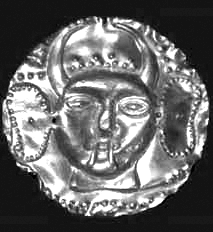Introduction
There are four extant hell texts from the Zoroastrian tradition. Dating these texts is problematic: the manuscripts provide the only reliable basis. Although the texts themselves are probably much earlier than the earliest surviving manuscripts, it is impossible to determine the form and contents of the originals and we suspect, or fear, that they may have been revised extensively according to new ideas. Although scholars feel that many of our earliest notions about hell derive from Zoroastrianism, with the evidence provided by these texts we cannot make a reliable determination.
Although this is a religion that dates back to the Prophet Zoroaster (Zarathustra) c. 1200 BCE, and the religion flourished from approximately the seventh century BCE until the seventh century CE, the four extant hell texts all date from between the sixth and ninth centuries CE. There are no contemporary English translations for these Avestan (Old Iranian) and Pahlavi (Middle Persian) texts; all our translations date from the late nineteenth century, and new translations could contribute to our understanding of the nature of Zoroastrian hell. Of these texts, the Book of Scriptures, Religious Judgments and the Book of Judgments of the Spirit of Wisdom describe similar versions of hell and appear to be normative for Zoroastrian belief. The Book of Arda Viraf seems anomalous in the context of these works, but it has survived into the present day as a popular religious text.
1. A Book of Scriptures (or Hadhokht Nask) dates from the sixth century CE. This work is a dialog between Zarathustra and Ahura Mazda, the supreme god of Zoroastrianism, on the fate of the soul on the four nights after its death, from the three nights that it spends sitting near the head of its own corpse chanting and imploring blessedness until the fourth night when the wicked soul will enter eternal gloom where it will be fed on putrid things.
2. Book of Arda Viraf (Arda Vîraf Namak, sixth century CE; ninth-century manuscript). Arda Viraf authored an early first-person account of a journey to the underworld — a genre that would bolster, and provide so much of the evidence to support, belief in hell. His soul — not his body — travels both to heaven and hell, and he is guided through these places by Srôsh the pious and Ataro the angel who, like all guides on these otherworld journeys, explain to him those things that he sees and the reasons for them. The book comprises 101 chapters, and eighty-five of these recount his observations in hell. In the first three sections we learn that there is a river that the souls, aided by their guardian angels, must try to cross. If the friends and relatives of the dead shed too many tears, they swell the river and prevent the dead from successfully crossing. Then he comes upon the Chinvât Bridge and witnesses the encounter between a wicked soul and the hideous damsel, who appears again in the Religious Judgments of Manuschihr and the Book of the Judgments of the Spirit of Wisdom. At this point Arda Vîraf has descended far enough to see the jaws of hell and the narrow, dark, gloomy pit full of smoke, stench and demons.
In seventy-nine chapters (20–52 and 55–99), structured in a highly reiterative question and answer format, he describes the punishment of the souls before him — men and women — and questions his guides about them; they explain what the victims had done to deserve such fates. Many punishments are for normal sins, like adultery and slander, but there are also numerous punishments for violating ritual practices associated with fire and water, food and seeds; for violating civic responsibilities, like those regarding weights and measures for merchants and principles of justice for judges; or for behavior that has a destructive effect on the community (breaking bridges, etc.). Cruelty to animals, especially quadrupeds, is particularly punished in the afterlife. Children appear in hell only as punishments to their parents for sins against them, like infanticide, neglect and abuse. Multiple punishments are often allotted to each sinner, and the possibilities include hanging, flaying, infestation, beheading, and dismemberment. The sense organs are often attacked with sharp objects or putrid fecal or menstrual discharges. The wicked appear as agents in their own suffering, performing ceaseless fruitless tasks, gnawing their own bodies, and feeding on impurities. At a point about one-third of the way into this catalog of sins and sinners, Arda Vîraf interrupts his course to describe a lower place in hell, Chikat-i-Daitih. This is a desert and a deep dark pit, the darkest hell full of more demons and demonesses, stink and fire, and more wicked souls. In the final section on hell he recounts his sight of Angra Mainyu, the deadly world-destroyer.
3. Religious Judgments (or Decisions, Dadestan-i Denig) by Manuschihr, ninth century CE. Dastur Manushchihr i Goshnajaman of Pars and Kerman (provinces in south-central and southeast Iran) answers 92 questions posed by fellow-Zoroastrians. Six questions (19, 20, 24, 26, 31 and 32) concern the fate of the wicked after death and particularly in hell.





